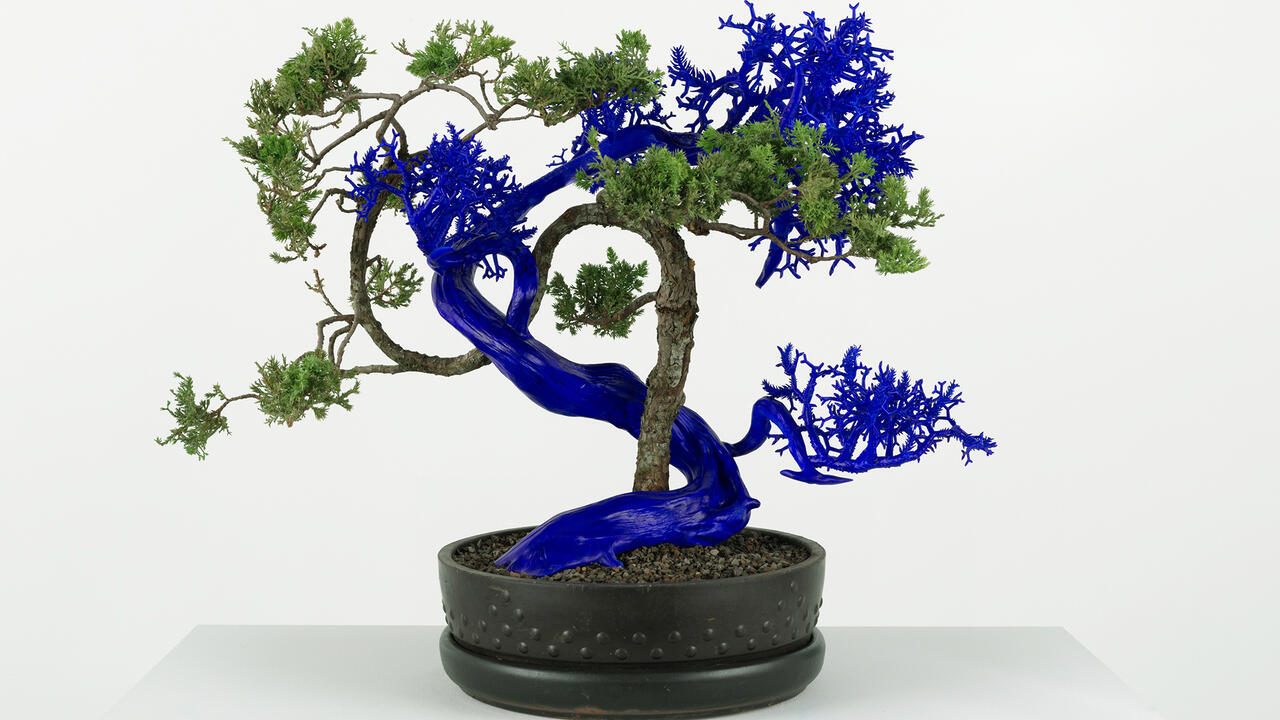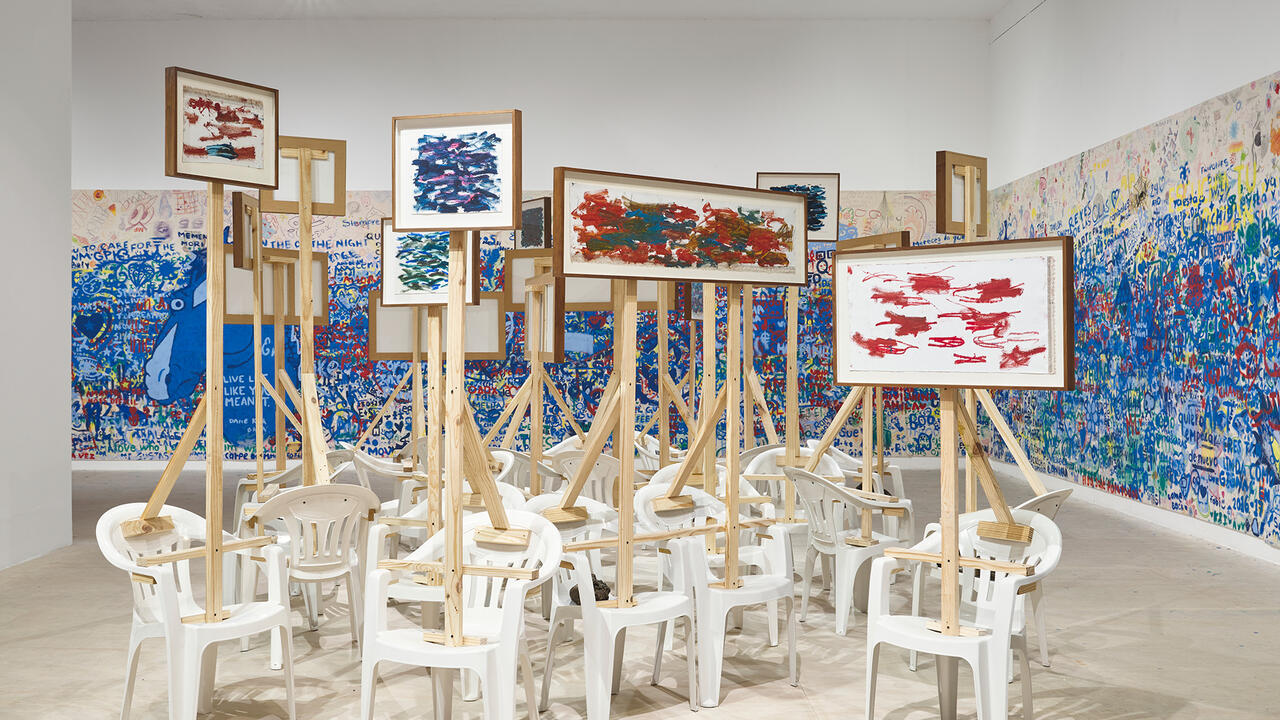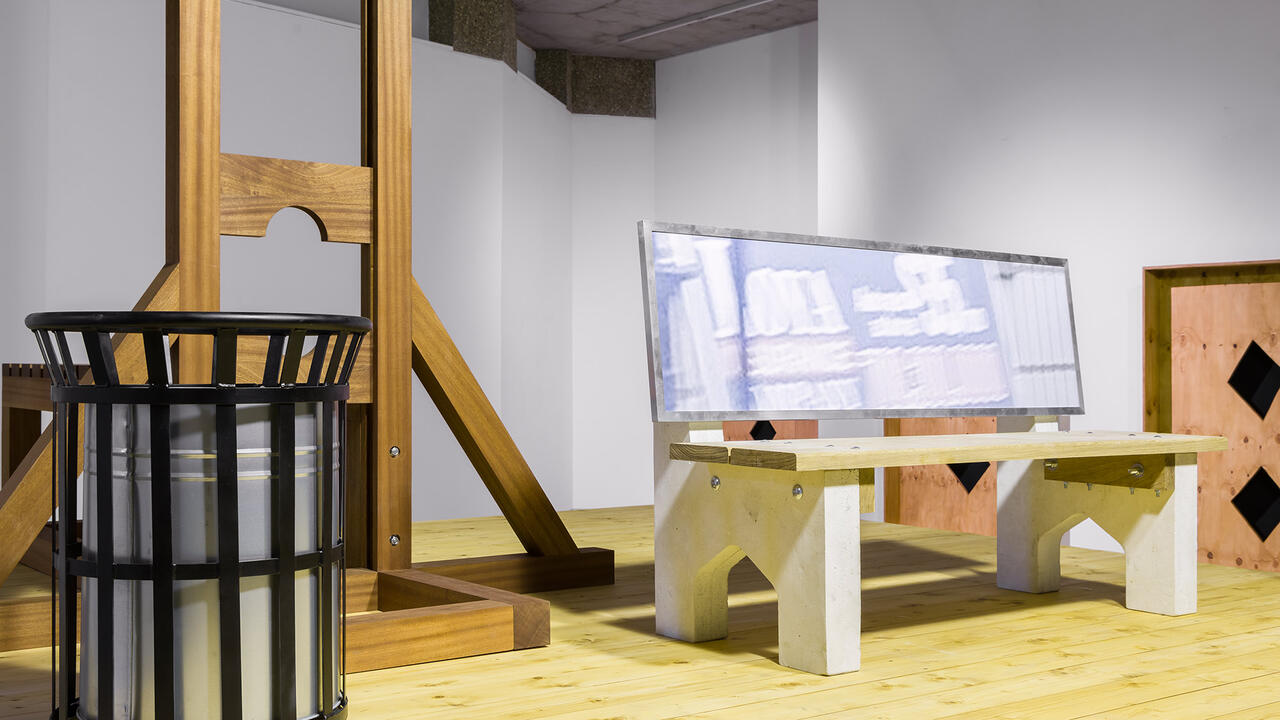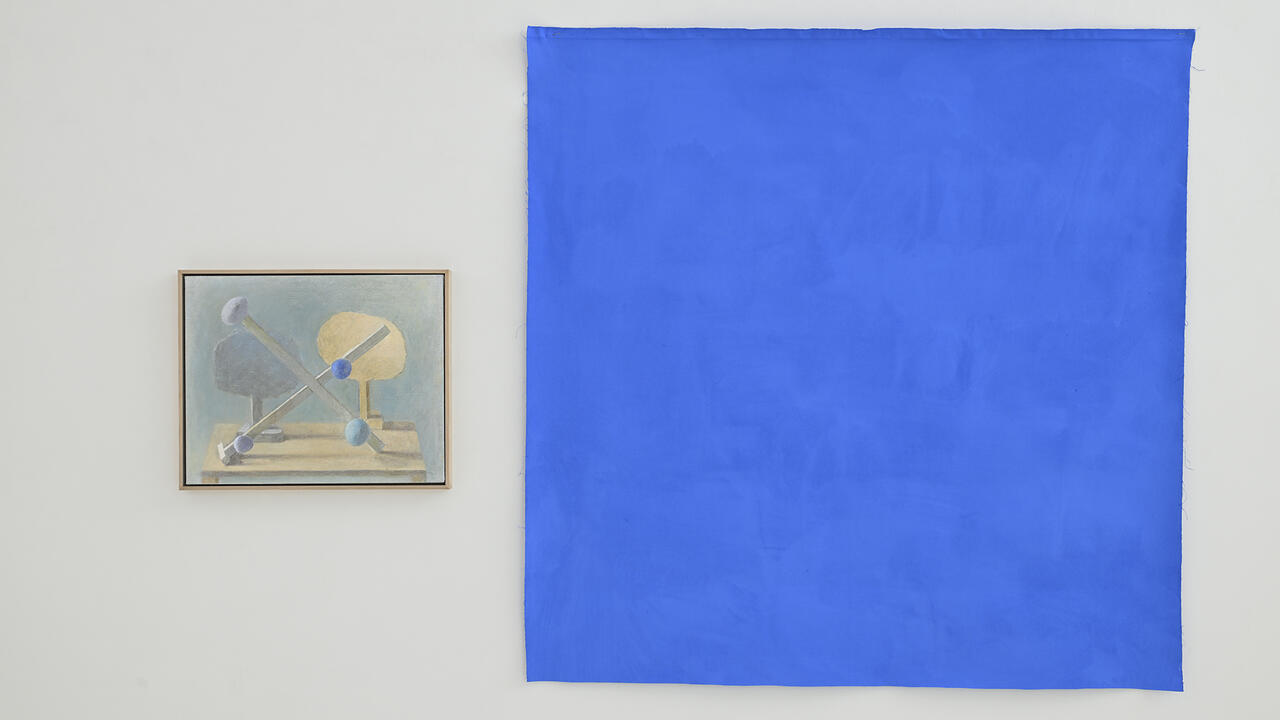Reading Jenny Holzer in a Vortex of Language
Curatorial misfires leave a lot to be desired in the artist’s confusing survey at the Guggenheim Museum
Curatorial misfires leave a lot to be desired in the artist’s confusing survey at the Guggenheim Museum

Interviewed on video as she prepared for the 1989 debut of her now iconic LED text work, Installation for the Solomon R. Guggenheim Museum (1989/2024), Jenny Holzer spoke of the difficulty of working with the museum’s unusual architecture. ‘It’s a wonderful space, it’s a fabulous space, a complicated space,’ she reflected. ‘[But] on the other [hand], it’s a death-to-art space.’ The camera pans over a sheet of paper where three of her truisms are written in all caps: ‘PRIVATE PROPERTY CREATED CRIME’; ‘SLIPPING INTO MADNESS IS GOOD FOR THE SAKE OF COMPARISON’; ‘ABUSE OF POWER COMES AS NO SURPRISE’. The work, she explains, came to her after months of reflection, an idea ‘pared down to what was necessary – nothing more, nothing less – that didn’t kill off the space and didn’t kill me.’
In the current iteration of this site-specific work, which reprises for a 21st-century audience the dizzying spectacle of scrolling electronic verbiage, the installation spans all six levels of the museum’s spiral ramp, rather than the original three as in 1989. Running for an estimated seven hours, and incorporating Holzerisms from 1977 to 1996, it is the basis of a blockbuster show that is anything but pared down. Described in a press release ‘as a solo exhibition in which the artist treats the entire museum as an installation’, ‘Jenny Holzer: Light Line’ draws from multiple bodies of work. These include the little-known ‘Diagrams’ series (1975–76) of small-scale drawings reproduced from physics textbooks; the large-scale ‘Redaction Paintings’ (2005–ongoing), recreating declassified US government and military documents on subjects including Guantanamo Bay and the January 6th US Capitol insurrection; and ‘Cursed’ (2022), a collection of Trump tweets stamped onto fragmented lead and copper plates.

Given the artist’s prodigious career, the inclusion of so much work makes sense, yet the effort to connect these different series on the basis of something beyond their use of text is overwhelmed in an installation that feels like a failed survey. In an apparent attempt to mimic the chance encounters that characterized the artist’s early street art, the curators have placed many wall pieces near stairwells, leaving odd pockets of dead space along the upper rotunda where such work might’ve been better placed.
In the High Gallery, a grid of the artist’s ‘Inflammatory Essays’ (1979–82) printed on coloured paper covers the walls from floor to ceiling, as if to recall – again – the guerilla-style ephemerality of Holzer’s street interventions. Each 100-word text is comprised of short sentences that incite, deride and exhort with the rhetorical flair of a zealot. ‘IT ALL HAS TO BURN, ITS GOING TO BLAZE. IT IS FILTHY AND CAN’T BE SAVED’ begins one. ‘GUNS MAKE WRONG RIGHT FAST’ ends another. Fiery, erratic and sometimes threatening (‘I’ll CUT THE SMILE OFF YOUR FACE’), these incendiary declarations address so many of the divisive political issues we face today: the return of authoritarianism, the Christian right, xenophobia and the polemical character of public discourse. The violent machismo of Trumpism lurks everywhere (‘SEND THEM AWAY GAGGING, OR SOBBING IF THEY’RE SOFTHEARTED’), though in true Holzer fashion, the lack of attribution makes the origins and intentions of many slippery by design. You could just as easily imagine a statement such as ‘ACTION WILL BRING THE EVIDENCE TO YOUR DOORSTEP’ coming from the mouth of a radical climate activist as from a Bible-thumping preacher. During my visit, one patron sat on one of the marble Truism benches placed nearby to read them more closely and was quickly shooed away. The authority of such a corrective felt ironic in the context of the room’s messaging – an insidious reminder that no one escapes institutional power. Yet in the 1989 exhibition, a wide circle of these benches placed in the atrium served, according to a Bloomberg blurb, ‘as a respite for visitors’.

Holzer’s ‘Truisms’ (1977–87) are of course her most enduring works, and their ingenious, incongruent mix of the convivial and Orwellian, the pithy and blustering, distinguished them from the start. In a 1984 Artforum review, Richard Armstrong deemed them ‘the most intriguing variant on and the final apotheosis of word art.’ The finality might be debatable 40 years on, but the aphoristic one-liners continue to find life on protest signs, T-shirts and condoms (a plexiglass container of these – free to the public – can be found in one of the museum’s bathrooms). They have inspired fashion collections like Holzer’s 2017 collaboration with the late Virgil Abloh, and a Twitterbot account called @HOLZERTRON that posts Truisms on a daily basis. ‘ABUSE OF POWER COMES AS NO SURPRISE’ is arguably the most famous of these, and was recently adapted in 2017 by the #MeToo-adjacent movement, Not Surprised, to confront sexual harassment in the art world. In ‘Light Line’, they are embedded inside an array of so many phrases, taken from so many sources, over so many decades, that their ubiquity is subsumed into a vortex of language that becomes, in a meta-sense, its own truism.

Holzer began writing the Truisms while a student in the Whitney ISP programme (1976–77) as an exercise in distilling her readings – critiques of capitalism, empire and patriarchy – into single sentences. The slogan-like statements recalled the then-contemporary Pictures Generation, a movement of media-savvy artists who appropriated advertising strategies to question notions of originality and authorship. By collapsing various ideological positions into slogans and cobbling them together with the same equivocality of the ‘Inflammatory Essays’ and Installation for the Solomon R. Guggenheim Museum, Holzer ultimately underscored the relativity of truth and the context that shapes it. The medium after all is the message, as Marshall McLuhan famously declared in 1967 – perhaps the mother of all slogans.
Holzer’s ongoing choice to present her texts without attribution – to obscure, at least partially, her voice as author-medium – invokes this adage. Once we know the identity of a source, we bring assumptions and biases to the veracity and meaning of what is communicated. The installation’s variations in pace, colour and font, and its confounding montage – ‘CONTAMINATION MAKES THE NEW WEATHER AND THE STINKING HEAT’ … ‘THE BABY IS RED AND TRIES TO PULL AWAY FROM ME’ … ‘AFTER THIS IDIOT PERIOD OF SQUANDERING AND WAITING I FEAR EVERYONE WHO DOES NOT WELCOME CHANGE’ – does much the same. But if the exhibition’s odd suturing of installation and survey derives from the same impulse to refuse easy coherence – to express the relativity of truth and the role of the viewer-cum-reader – this interpretation of medium obscures the message. Sadly, the relevance of Holzer’s landmark LED text installation, like the value of her ongoing commitment to exposing corruption, ends up lost in a curatorial misfire that ‘kills off’ both the potential of the museum space and the prescience of Holzer’s powerful vision.
‘Jenny Holzer: Light Line’ is on view at the Guggenheim Museum, New York, until 29 September
Main Image: Jenny Holzer installing exhibition, December 1989, Solomon R. Guggenheim Museum, New York. Courtesy: © Solomon R. Guggenheim Foundation, New York; photograph: Michele Perel






















